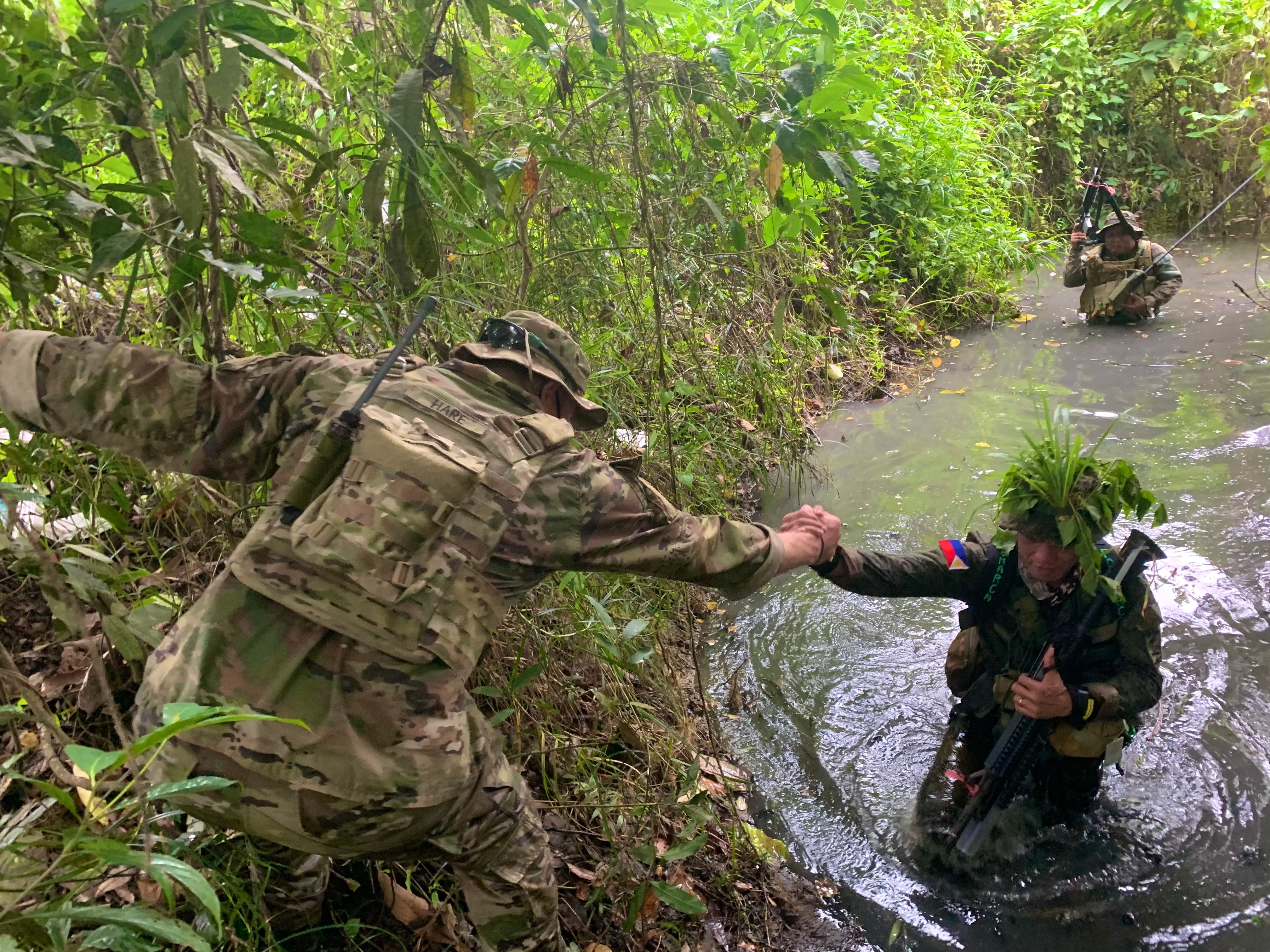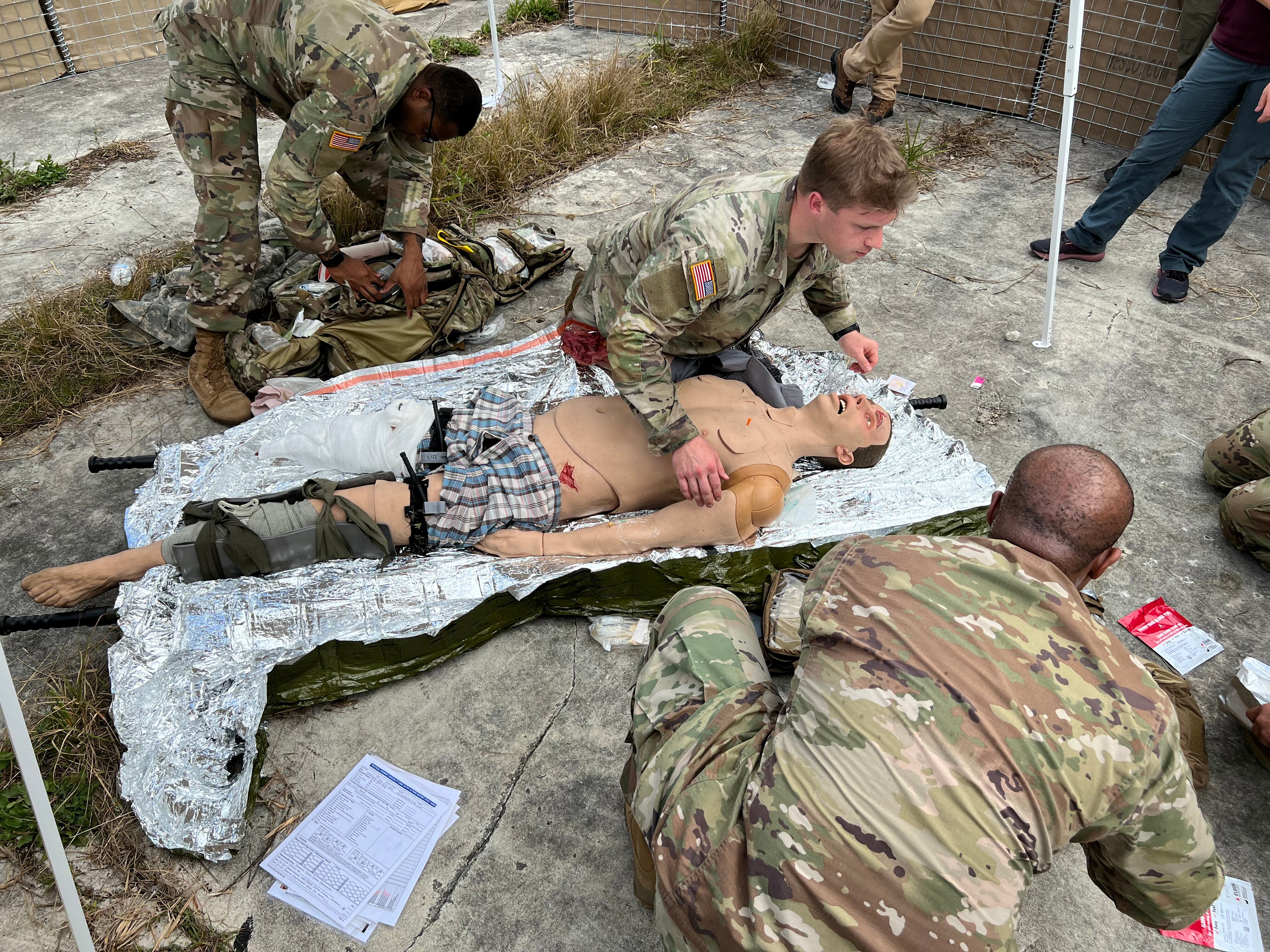The Army’s Security Force Assistance Brigades have a unique mission that falls somewhere between conventional soldiering and the decades-long work of foreign internal defense.
An SFAB soldier’s gear needs to mirror that blended mission, with some elements of conventional units but with the likelihood they could be in an unsupported location far from the main force.
And each SFAB is now regionally aligned with its own geographic combatant command, meaning the range of weather, terrain and technology needed varies widely.
Army Times spoke with Security Force Assistance Command officials about those needs recently, and previously covered a 2021 industry day in which the heads of all things gear for SFABs laid out what they think these units need now and in the near future.
At that event, officials said the SFABs would receive the Next Generation Squad Weapon when fielded, the Enhanced Night Vision Device-Binocular, Joint Light Tactical Vehicle, Squad Multi-Purpose Equipment Transport, as well as both long and short-range reconnaissance assets.
They’ll be as well equipped in those areas as modernized light infantry units in the near future.
SFAC officials told Army Times that the brigades and their teams will be modernized alongside other conventional units, getting all of the gear, weapons and equipment that comes standard.
Maj. Gen. Scott Jackson, SFAC commander, said that as his brigade returned home from Afghanistan in 2019, the material requirements for that brigade fit the mission seamlessly.
But, Jackson said, as the brigades have moved “to ever more decentralized operations around the world” they’re shifting focus to “maintain those critical capabilities at ever smaller scale.” He pointed specifically to communications, sustainment and medical equipment.
Currently, SFABs are testing “early entry kits” that enable instant communication, complementing the existing SFAC Iridium Mission Link Systems and the Army’s Global Rapid Responses Information Package, or GRRIP, system.

At last year’s SFAB industry day presentation, Maj. Ryan Mabry, with the Army Capabilities Manager for SFAB, was looking to industry to provide full-motion video at the tactical level.
At that time, the teams lacked the ability to view such video across multiple waveforms using encryption. That’s handicapped advisors when separated from their squadron or battalion.
Teams were able to use the AeroVironment, Inc. Pocket RVT — basically a small-screen tablet with an attached transmitter and receiver to view feeds from the PUMA, Raven, Instant Eye, Aerosonde and Raid Tower ISR platforms.
Each battalion was working off two One System Remote Video Terminals in their operations sections, but those were not dismountable. SFABs want a dismountable device capable of full-motion video feeds across all waveforms and frequencies.
On the medical side, teams may have hospital access in more developed areas. But if they’re stuck on an outpost or island without backup, they may need to provide their own medical care. Something that few units have had to do for any sustained period for much of the past two decades during the wars in Afghanistan and Iraq.
“SFAB medical capabilities have increased with an emphasis on non-trauma medicine, as well as delayed evacuation medical care,” Jackson said.

The two-star added that all soldiers receive Tactical Combat Medical Care courses, normally for senior medics. Also, the medics are trained in delayed evacuation casualty management and prolonged field care.
Officials at the 2021 industry day labeled low-level teams as having, “extremely constrained medical capability.” They were unable to provide prolonged field care and could not sustain for up to 72 hours, if needed.
At that time, the necessary medical equipment was held at the battalion level and team level soldiers had no point-of-care laboratory, imaging, patient hold, blood or tactical nursing capability.
What the SFABs want is the ability to treat, test, image and resuscitate wounded for 72 hours at the team level until they’re able to get them to the next echelon of care.
Beyond lifesaving, small teams must also run their own logistics to a point.
Jackson said the teams will need to be self-sufficient, sometimes with contracted support, but optimally, with their own capabilities. That means finding electrical power, be it in the steppes of Mongolia or the highlands of Colombia, far from an electrical outlet or massive forward operating base.
That means not just generating power, but managing it, too, ACM materials team member Bill Morgan told industry officials last year.
“I need a smart way to harvest, store, share any type of power,” Morgan said.
The teams also need light, sustainable water purification for all their water-based needs — hydration, cooking, cleaning and bathing.
Lastly, although the SFABs will have access to Humvees and JLTVs, those are not ideal for all-terrain and don’t quite fit the whole team, anyway. The teams run from four to 12 soldiers. Most will have eight or more.
The two vehicles don’t offer the right kind of deployable, transportable, mobile movement that these teams will need in both permissive and non-permissive terrain, officials said.
Right now, SFAB teams are working with the JLTV, Humvee and M115A1 Expanded Armament Carrier, or EAC.
But they need a seven to a nine-seat vehicle that can handle a 70% off-road mission profile, officials said.
Todd South has written about crime, courts, government and the military for multiple publications since 2004 and was named a 2014 Pulitzer finalist for a co-written project on witness intimidation. Todd is a Marine veteran of the Iraq War.





